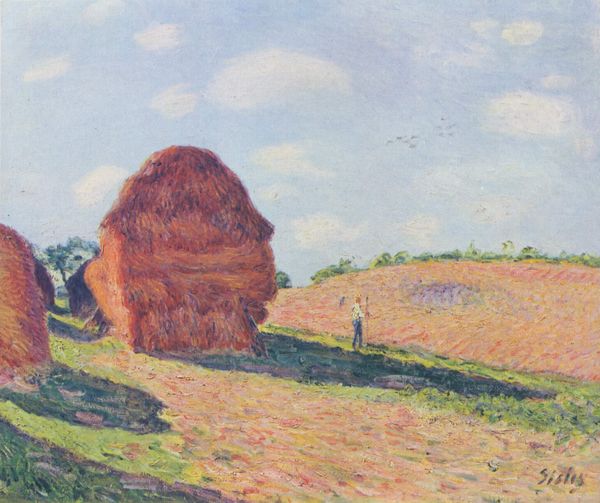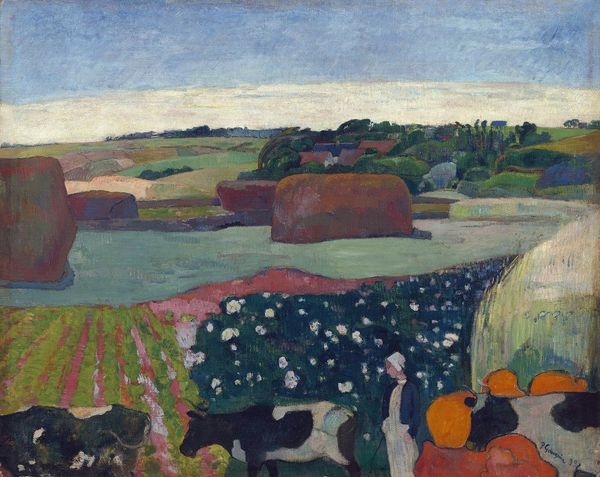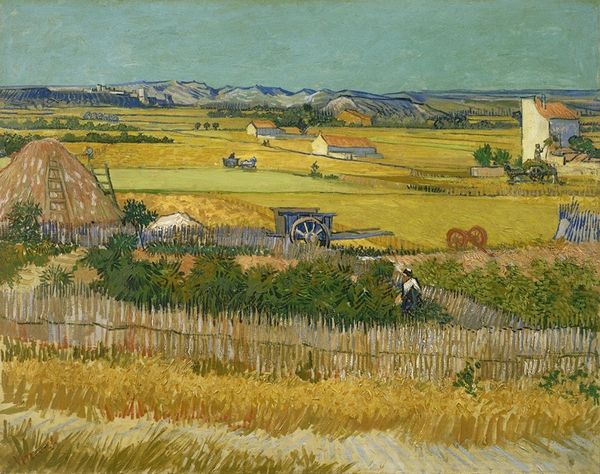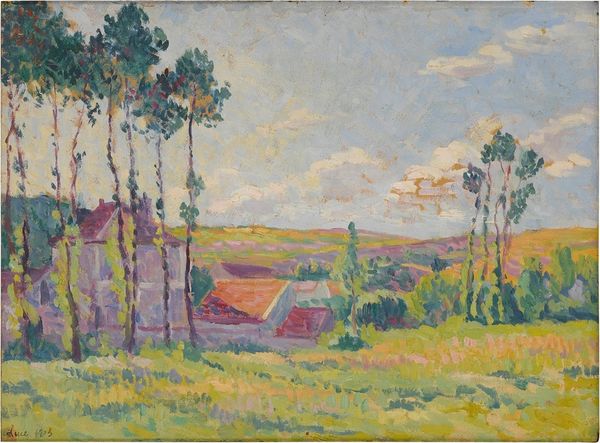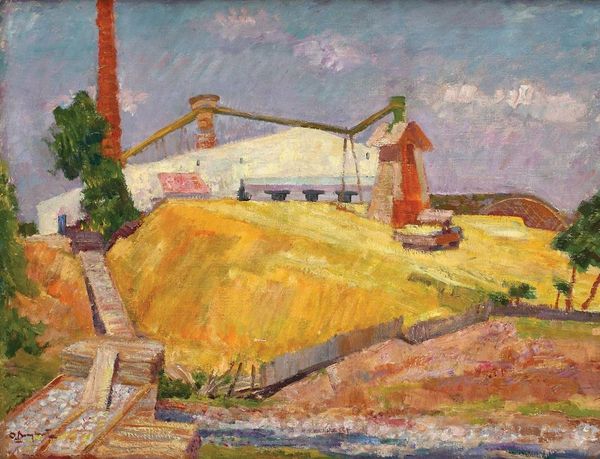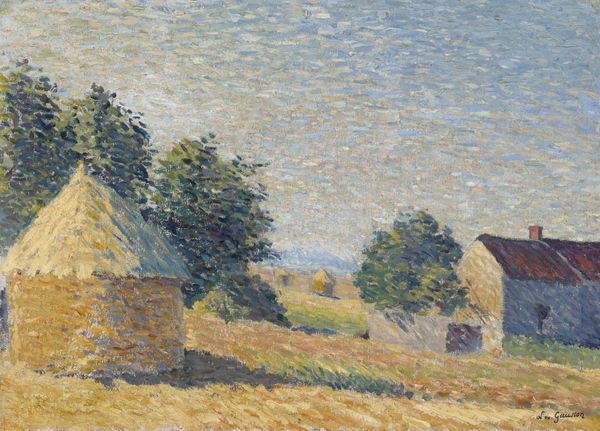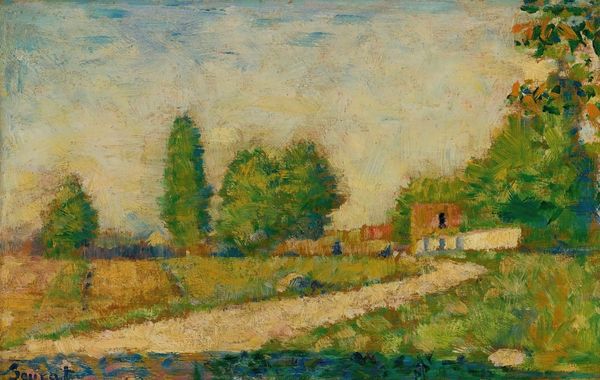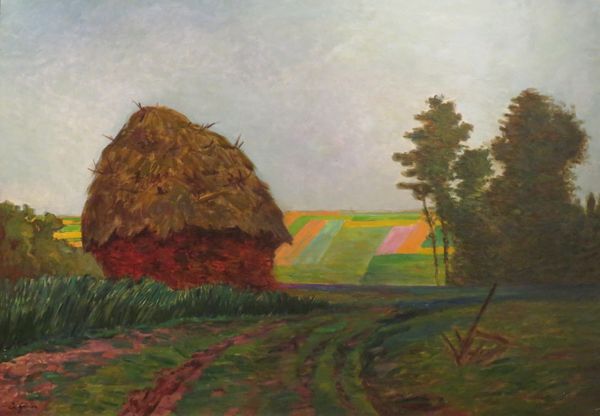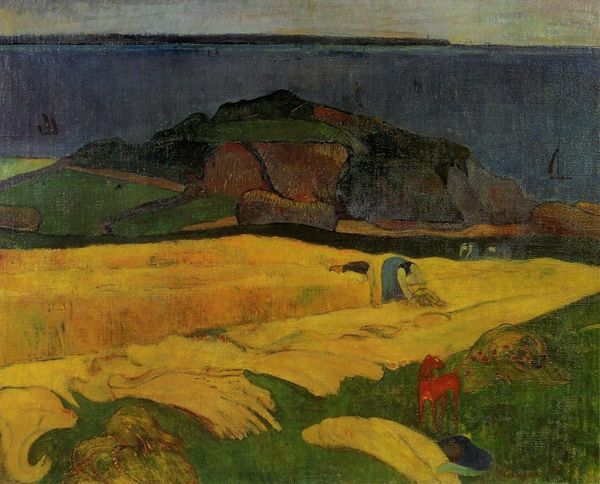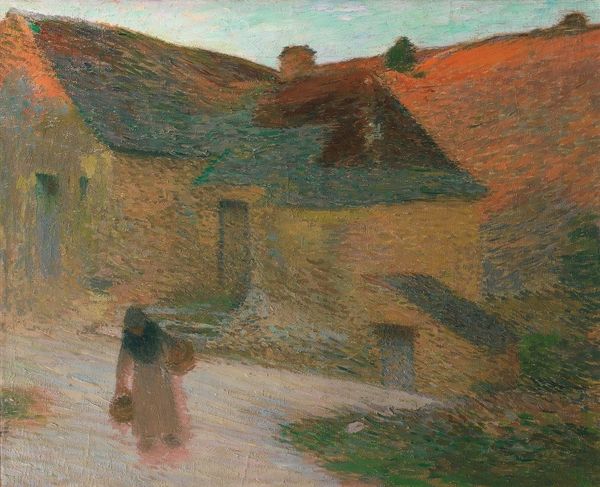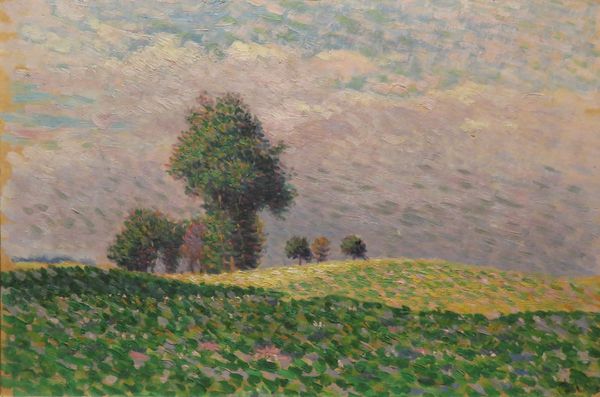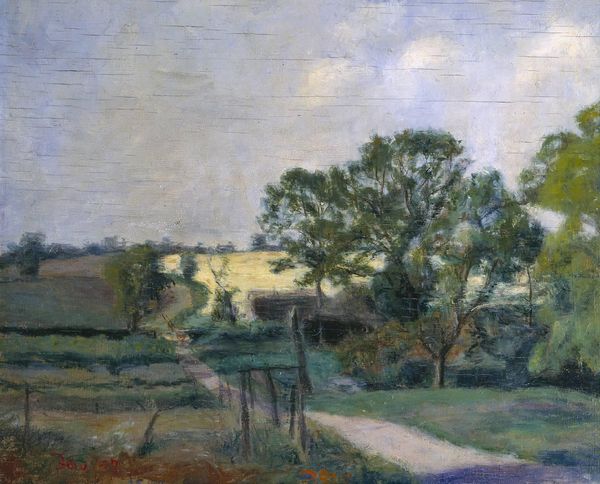
painting, oil-paint
#
painting
#
oil-paint
#
landscape
#
figuration
#
oil painting
#
post-impressionism
Copyright: Public Domain: Artvee
Curator: Emile Bernard, a key figure in Post-Impressionism, crafted this landscape. It is titled “Saint-Briac”, after the town in Brittany, France. It looks like it's oil paint, but let's delve into how the labor, location, and materials coalesce. Editor: It’s strikingly pastoral. A field filled with stacks of hay and a lone figure walking. It gives me this intense feeling of isolation but also speaks to the human relationship with nature, doesn’t it? A sense of quiet resistance, of finding peace amidst laborious activities. Curator: I find it more indicative of late 19th-century rural realities. Brittany was perceived as a culturally distinct region, with its own traditions and social structures, quite separate from Parisian ideals. This context is central. How does gender play into the labour and lifestyle here? Are the materials of labor the focal point of meaning? Editor: The act of working with these very basic raw materials speaks to the values espoused by that life in and of itself! Think of the figure's pose. The haystacks stand like monuments, each a culmination of human endeavor in harvesting and the seasons. And what do we learn about identity through labor in this particular community? How does it affect notions of self-worth? Curator: Absolutely! And the artist's intentional brushstrokes - almost broken, separate, not smoothly blended- give the haystacks form, they reflect this. Also notice how they extend into the painting. Editor: The landscape technique blurs the distinction between painting and lived labor experience. Even in an area with obvious privilege, how is it being communicated, how are labor ethics and social responsibilities woven into their lives? I feel as if the picture is quietly questioning accepted notions of artistic worth and rural reality. Curator: Yes, I concur. Bernard really presents a sense of social relations and gender expectations around Brittany farming life here. Through color, composition, and attention to his process and materials he shows more than simply what is depicted; he's hinting to this painting’s place within cultural and societal dialogues on these subjects, too. Editor: It's quite compelling how we each gleaned distinct but complementary viewpoints from the exact same composition! Thank you. Curator: It highlights the multifaceted dialogues surrounding the intersectionality of material culture and social-historic context, really. It's quite valuable, really.
Comments
No comments
Be the first to comment and join the conversation on the ultimate creative platform.
